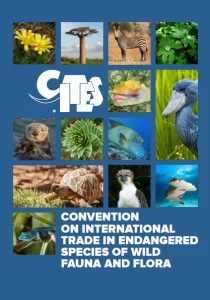25 Nov Convention on International Trade in Endangered Species
CITES
The topic is based on How Convention on International Trade in Endangered Species (CITES) impacts the Indian Environment and Climate Change.
Relevance for Prelims: COP19, World wildlife conference, Species in News
Relevance for Mains: Conservation efforts
Context: Recently, the Conference of Parties 19 (CoP19) was held a Panama City.
Highlights of the conference:
India’s species (Dalbergia sissoo) is included in Appendix II of the convention, thereby requiring it to follow CITES regulations for the trade of species. Now, relief is provided by easing the CITES rules for the export of Shisham (Dalbergia Sissoo) based products which is going to rev up India’s exports.
The CoP (Conference of Parties) has accepted a proposal from India to include sea cucumber (Thelnota) is Appendix II of the Convention.
India’s proposal for induction of the fresh-water turtle Batagur Kachuga (Red Crowned Roofed Turtle) has been appreciated by Cop19 of CITES.
Conservation efforts by India:
- Operation Turtshield: To curb wildlife crime.
- Wildlife Protection Act, 1972: many species of turtles and freshwater tortoises which are recognized as critically endangered, endangered, vulnerable, or near threatened are included in WPA, 1971, and given a high degree of protection.
About CITES
- It is an international agreement between governments 184 (now) to ensure international trade in wild animals and plants does not threaten the survival of the species.
- The convention entered into force in 1975 and India has become the 25th party to join CITES. States that have agreed to be bound by the convention in 1976.
- The signing of the CITES convention is legally binding on the parties meaning thereby they have to implement the convention which does not take place of national laws.

Pic: Convention on International Trade in Endangered Species
It has three appendices:
Appendix-1: It lists species that are the most endangered among CITES-listed animals and plants.
They are threatened with extinction and CITES prohibits international trade in specimens of these species except when the purpose of the import is not commercial barring scientific research.
Appendix II: It lists species that are not necessarily threatened with extinction but could become so trade needs to be controlled. It includes-so called look-alike species-who specimens in a trade that looks like those of species listed for conservation reasons.
Appendix-III: It is a list of species included at the request of the Party that already regulates trade in the species and that needs the cooperation of other countries to prevent unsustainable or illegal exploitation. Trade of specimens on the international level is only allowed on presentation of appropriate permits or certificates.
Any species that may be added or removed from Appendix I or II could be only done by the Conference of Parties (CoP).
Source
Daily Current Affairs for UPSC
If you want to pass any competitive examination, you should read Current Affairs Daily. Reading daily current affairs will help you to pass the mains, prelims, and interviews of the UPSC examination. So everybody should go through Daily Current Affairs every day. Get Daily Current Affairs for UPSC examination from Plutus IAS free of cost



No Comments